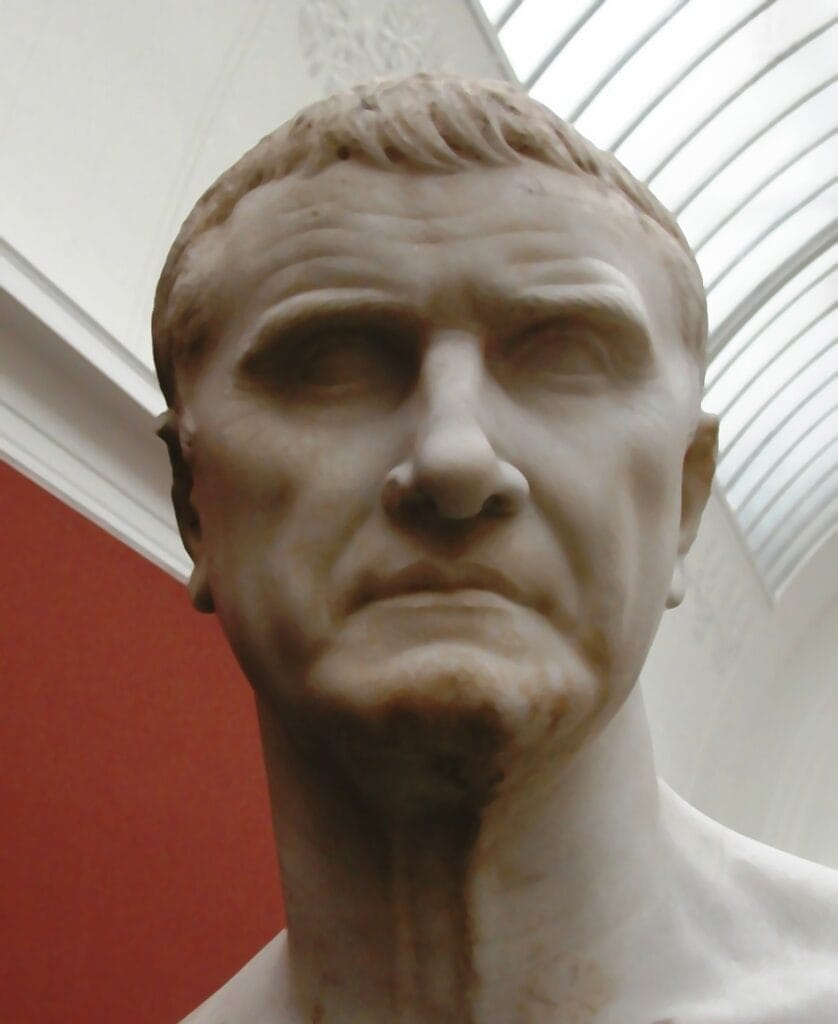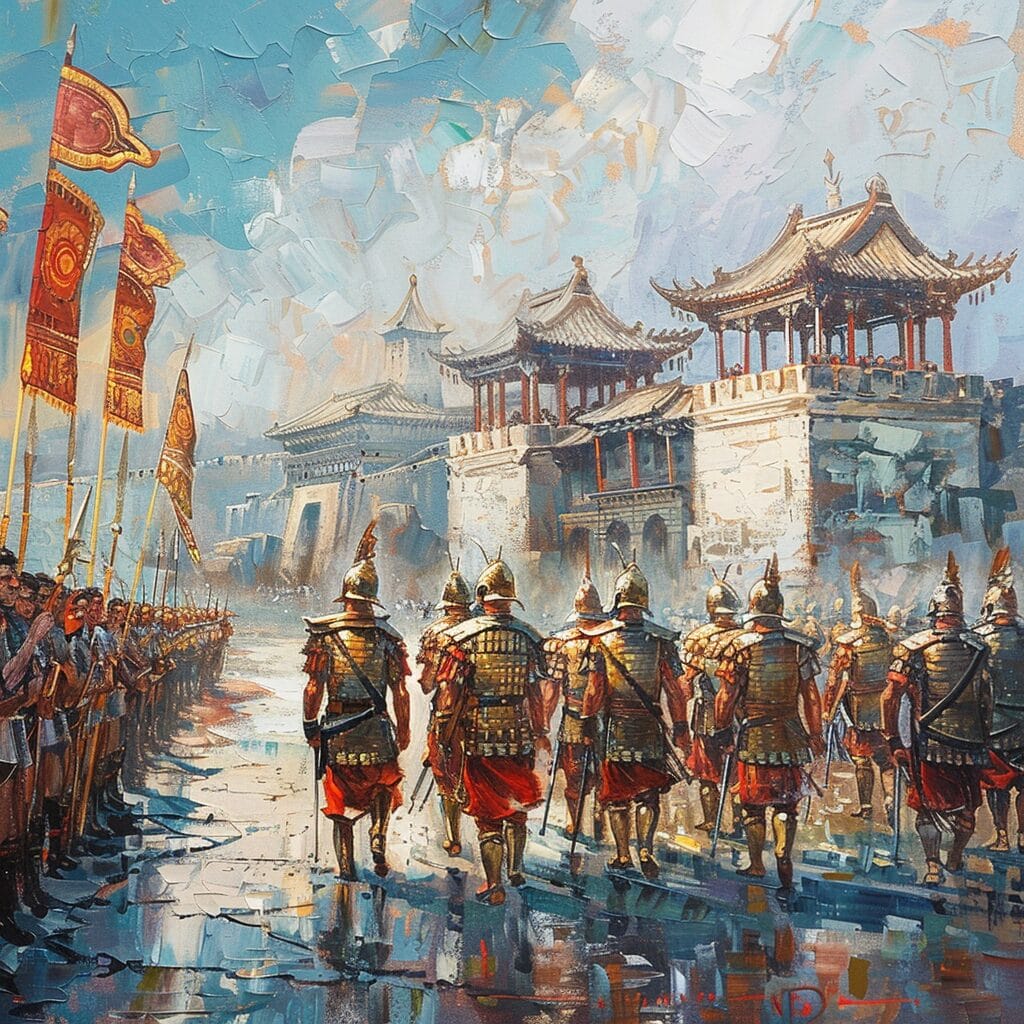Liqian is a place of significant intrigue and debate, particularly concerning its ancient origins and the claim that it has connections to Roman soldiers. Nestled in the heart of China, this small village, also known as Zhelaizhai, has captured the imagination of historians and theorists, owing to the distinctive features of some of its residents and the unusual genetic traits they exhibit. These features have produced a hypothesis that the village could be partly descended from Roman legionaries who settled in the area centuries ago after a military campaign.

The debate surrounding Liqian brings together a tapestry of historical, cultural, and genetic threads. Scholars analyze the texture of the village’s past, examining its cultural impact and how it has been perceived by the public and media over time. As modern genetic testing methods become more sophisticated and widespread, attempts to understand the genetic makeup of the villagers have gained momentum, promising to shed light on the mysteries of their ancestry.
Key Takeaways
- Liqian’s unique genetic characteristics have led to theories about Roman ancestry.
- Historical analysis and genetic research are central to understanding villagers origins.
- The village of Liqian has become a subject of cultural interest and media attention.
Historical Background
The historical roots of Liqian are tied to ancient accounts of warfare and migration which signify the possible interaction between Ancient China and Ancient Rome. Significant events include the involvement of Rome’s legions in the Parthian army and the Han Dynasty’s military campaigns.
Liqian in the Han Dynasty
Located within Yongchang County in China’s Gansu Province, it hearkens back to the Western Han Dynasty period. It was established as a county during the reign of Emperor Wu of Han in the 2nd century BC, who greatly expanded the empire. In that era, the Han Dynasty engaged in numerous conflicts with the Xiongnu nomads to fortify its frontiers.

Battle of Carrhae and the Lost Legion
In 53 BC, a critical engagement known as the Battle of Carrhae unfolded between the Roman Republic, led by Marcus Licinius Crassus, and the Parthian Empire. Post-defeat, a theory posits that some captured Roman legionnaires were relocated to the east by the Parthians, to defend its borders far away from Rome. Another confrontation, the Battle of Zhizhi, fought between the Han forces and the Xiongnu nomads, could have possibly entailed some of these Roman soldiers, leading to speculations that some of the lost legion may have settled in Ancient China, potentially in Liqian, thereby influencing the region’s history and demography.
Cultural and Genetic Perspectives
DNA Tests and Roman Origin Theories
Roman Origin: The theory of the Liqian people descending from ancient Roman soldiers is famously supported by Homer H. Dubs’s hypothesis in 1940. It posits that a lost legion of Roman troops captured by the Parthians subsequently became mercenaries in Central Asia, some possibly ending up in what is now China.
Genetic Evidence: Recent DNA tests sought to clarify the Liqian people’s lineage, scrutinizing paternal genetic variation. These tests aimed to identify markers indicative of Caucasian origin. While genetic variation in Liqian indeed shows a diverse makeup, the results have not conclusively proved a direct Roman ancestry. Instead, they reveal a complex genetic fabric, likely influenced by various populations across Central Asia and along the Silk Road.
Cultural Integration and Influences
Caucasian Origin Claims: Claims of Caucasian origins, based on physical features and local lore, have fueled extensive debates. However, genetic data suggest that the Liqian’s roots are more nuanced, shaped by centuries of cultural integration.
Cultural Perspectives: Beyond genetics, the Liqian demonstrate a cultural palette reflecting the integration with surrounding ethnic groups. This cross-cultural influence is seen in aspects like architecture, language, and local customs. Although some cultural elements may align with ancient Western civilizations, they do not exclusively point to a Roman ancestry, emphasizing the complexity of cultural transmission and assimilation processes.
The Modern Village of Liqian
Contemporary Liqian and Tourism
In recent years, Liqian has seen an expansion in tourism owing to its unique history that hints at ancient Roman connections, highlighted by the presence of Caucasian physical traits among its residents. Jinchang, the city whose region Liqian is in, has placed significant emphasis on developing tourism in the region. Efforts to make the village more accessible through improved transport options have been noticed.
Visitors can immerse themselves in local history at the Liqian Ancient City and explore Zhelaizhai Village, where some residents claim descent from Roman soldiers. Tourism there not only shines a light on its rumored Roman Ancestry but also on the distinctive daily life of the village’s inhabitants. The establishment of attractions like Zijin Square, the culturally themed Culture Street, and the enjoyable Water Park, adds layers to the visitor experience.
Architectural Heritage and Landmarks
The architecture in Liqian underscores its heritage. Buildings featuring Neoclassical Architecture are found in the heart of the village, with the Liqian Pavilion standing as a testament to the melding of Eastern and Western styles. This pavilion, alongside other constructions, forms an integral part of the architectural heritage of Liqian.
Jiaojiazhuang Township, part of Liqian, further complements the historical ambience with its traditional homes and buildings. Significant landmarks such as the well-crafted Culture Street help preserve and showcase the local cultural identity. Each structure offers a glimpse into the coexistence of modern advancements and cherished traditional designs.

Liqian and Popular Media
This connection to Western history has caught the eye of popular media, leading to the creation of various entertainment pieces that blend Eastern and Western cultures.
One notable instance is the movie Dragon Blade, which stars Jackie Chan. The film explores the idea of ancient Romans in China and showcases a fusion of martial arts and Roman warfare. Chan’s character, a commander of the Silk Road Protection Squad, encounters a lost Roman legion, an echo of the lore surrounding Liqian.
The Legend of Romans in China extends beyond cinema into documentaries and literature. These works delve into the historical and cultural implications of such a blend, discussing how it enriches both the Chinese and Western narrative landscapes.
| Media Type | Examples |
|---|---|
| Film | Dragon Blade, starring Jackie Chan |
| Documentary | The Lost Legion of China |
| Literature | The Roman Empire in Chinese Sources |
Dragon Blade emphasizes not just martial prowess, but also the themes of cooperation and understanding between distinct civilizations. It adds to the Lore of Liqian as a bridge between the East and West.
While the story of Liqian is speculative, media portrayals contribute to the fascination with this village, presenting a narrative filled with speculation and discovery. The marriage of fact and fiction in tales of Liqian piques curiosity and invites audiences to explore a unique facet of cultural exchange.
People Also Ask:
What is the historical significance of Liqian’s green-eyed population?
Green-eyed population has fueled speculation about a possible connection to a lost Roman legion, which historians believe may have traveled to China. This intriguing theory suggests an ancient link between East and West, though it remains a topic of debate and research.
How has the ethnicity of the Liqian people been determined by researchers?
Researchers have utilized genetic testing and historical analysis to explore the ethnicity of the Liqian people. These methods aim to uncover potential ancestral links and to understand the migration patterns that might have contributed to the ethnic composition of the population.
What are the main attractions to visit in Liqian City?
Liqian City is renowned for its archaeological sites, including ruins and relics that offer a glimpse into the region’s storied past. Visitors are attracted to these cultural landmarks, which provide insights into the alleged Roman presence and the region’s historical development.
How do the physical features of Liqian’s population differ from other regions in China?
The physical features of Liqian’s population, notably the occasional presence of green eyes and lighter hair, stand in contrast to the more commonly observed characteristics in other regions of China. These traits have captured public and scientific curiosity, leading to various hypotheses about the population’s ancestry.
Hello, my name is Vladimir, and I am a part of the Roman-empire writing team.
I am a historian, and history is an integral part of my life.
To be honest, while I was in school, I didn’t like history so how did I end up studying it? Well, for that, I have to thank history-based strategy PC games. Thank you so much, Europa Universalis IV, and thank you, Medieval Total War.
Since games made me fall in love with history, I completed bachelor studies at Filozofski Fakultet Niš, a part of the University of Niš. My bachelor’s thesis was about Julis Caesar. Soon, I completed my master’s studies at the same university.
For years now, I have been working as a teacher in a local elementary school, but my passion for writing isn’t fulfilled, so I decided to pursue that ambition online. There were a few gigs, but most of them were not history-related.
Then I stumbled upon roman-empire.com, and now I am a part of something bigger. No, I am not a part of the ancient Roman Empire but of a creative writing team where I have the freedom to write about whatever I want. Yes, even about Star Wars. Stay tuned for that.
Anyway, I am better at writing about Rome than writing about me. But if you would like to contact me for any reason, you can do it at contact@roman-empire.net. Except for negative reviews, of course. 😀
Kind regards,
Vladimir
